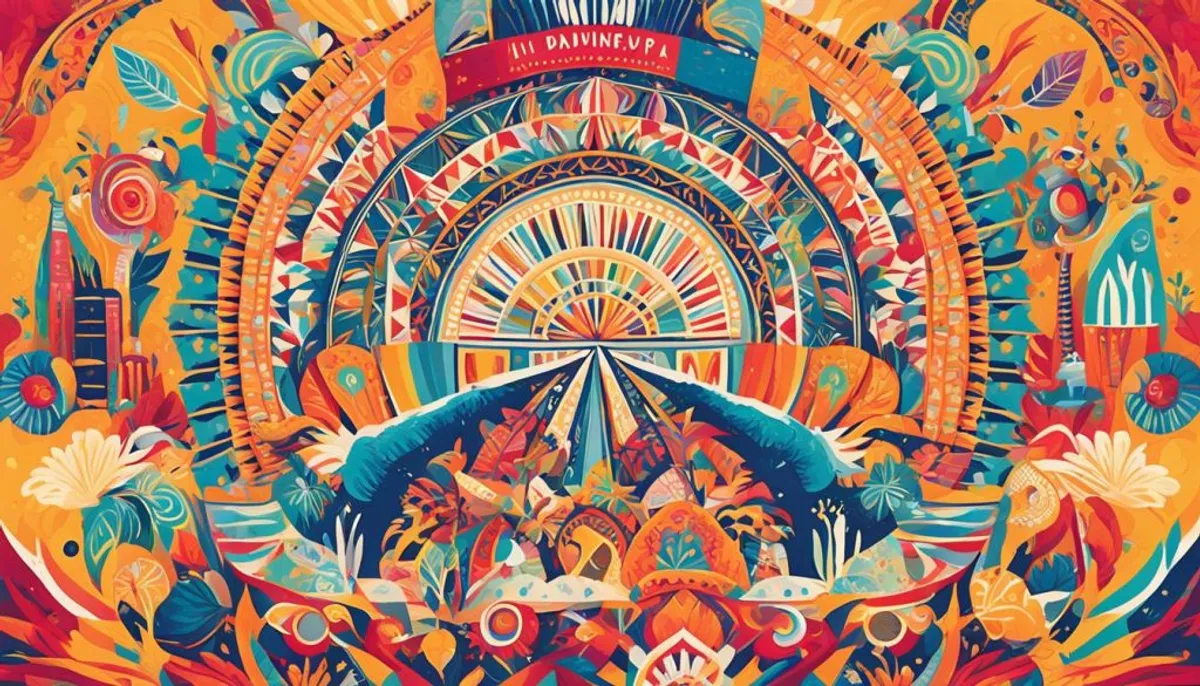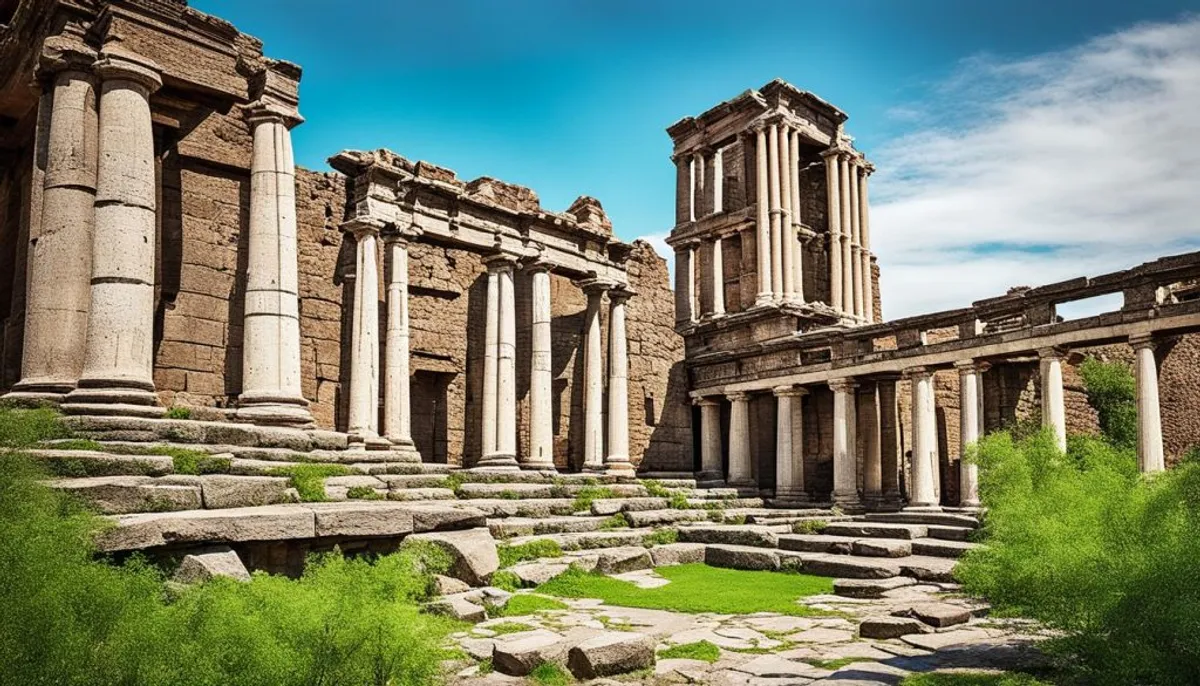The concept of “heritage” emerged during the French Revolution. It was linked to the fight against vandalism and the honor of the homeland. Since then, cultural heritage has evolved with society. It reflects the challenges of our time, from the creation of nations to the awareness of the finiteness of resources.
Heritage has also changed the humanities and the environment. Today, it is seen as a social creation, not just a legacy of history. The boundary between cultural and natural heritage is sometimes blurred. New ways of valuing heritage change our perspective on the collective.

Introduction
Definition of culture and heritage
Culture and heritage are closely related, but they have different definitions. Heritage encompasses tangible or intangible assets with artistic or historical value. These assets can belong to individuals or institutions and are often preserved for the public.
Material heritage includes buildings, archaeological sites, and more. Intangible heritage covers traditions, know-how, and testimonies. Heritage is a legacy that we must pass on.
Culture encompasses lifestyles, beliefs, arts, and traditions. Together, culture and heritage create the identity of a community. They showcase its history, values, and dreams.
| Criterion | Culture | Heritage |
|---|---|---|
| Definition | Set of lifestyles, beliefs, arts, traditions, and know-how of a social group | Set of tangible and intangible assets with artistic and/or historical significance |
| Elements | Languages, religions, customs, arts, gastronomy, etc. | Buildings, archaeological sites, monuments, know-how, traditions, etc. |
| Transmission | Passed down from generation to generation | Heritage to be preserved and transmitted |
Culture and heritage are essential and complement each other. Together, they form the identity of a community.
Difference between culture and heritage
Culture and heritage are closely linked, but they have important differences. Culture is the sum of traits that make a society unique. This includes its traditions, arts, and languages. It is what creates its identity and its intangible cultural heritage.
Heritage is different. It encompasses tangible or intangible assets of historical or artistic value. These assets are passed on to future generations.
Heritage comes from culture. But culture is broader. It includes traditions, customs, and much more. Heritage reflects culture, but does not capture it entirely.
- Culture is the sum of the distinctive traits of a society.
- Heritage refers to the tangible and intangible assets passed down to future generations.
- Heritage draws from culture, but culture is not limited to heritage.

In conclusion, culture and heritage are related but distinct. They show two aspects of a society's identity and legacy. Understanding this distinction helps appreciate the richness and cultural diversity.
Cultural heritage
Cultural heritage is a captivating subject that encompasses tangible and intangible assets. It includes tangible things like architecture and archaeological sites. It also includes traditions, know-how, and languages, showcasing the richness of our culture.
In 1972, UNESCO created the World Heritage List. This list celebrates exceptional sites on Earth. It currently contains hundreds of cultural and natural treasures, highlighting the diversity and value of national heritage.
France signed the Convention for the protection of world, cultural, and natural heritage in 1976. This demonstrates its commitment to protecting its material and intangible cultural heritage. French heritage is rich, with masterpieces and unique traditions.
Cultural heritage is essential for future generations. It must be transmitted and valued. This is a challenge for societies that want to celebrate their diversity and legacy.
Cultural diversity
Cultural diversity is very important to us. It shows the variety of cultures in the world. This diversity helps respect differences and fosters exchanges between cultures.
It also stimulates creativity and innovation.
Importance of cultural diversity
Cultural diversity is essential for keeping cultures alive. It helps transmit cultural traditions to future generations. This allows for the preservation of the cultural identity of each group.
It also makes the cultural richness of our world more visible.
- Cultural diversity promotes dialogue and mutual understanding among peoples.
- It stimulates creativity and innovation by encouraging the exchange of ideas and practices.
- Cultural diversity contributes to social cohesion and the building of a more inclusive society.
Preserving cultural diversity is crucial. It ensures the longevity of cultures and a thriving future for all.
Difference between culture and heritage
Culture and heritage are related but different. Culture is the sum of the unique traits of a society. Heritage, on the other hand, includes tangible or intangible assets passed down from one generation to the next.
Heritage is influenced by culture. But culture goes beyond heritage. This helps understand their importance for preservation and transmission.
Intangible heritage, such as traditions and oral expressions, is essential to culture. It reflects the identity and collective memory of a people. Tangible heritage, such as monuments and works of art, also testifies to cultural heritage.
The difference between culture and heritage lies in their nature and purpose. Culture evolves, while heritage is to be preserved and transmitted. Together, they showcase the richness and diversity of our societies.
Challenges of heritage preservation
The preservation of cultural and natural heritage is a significant challenge. It requires efforts at various levels to achieve this. It is crucial to conserve heritage sites and objects. This allows them to be passed on to future generations.
It is also important to safeguard intangible traditions. This includes know-how, rituals, and languages. These elements are essential to our heritage.
Challenges of heritage preservation
The challenges of heritage preservation are numerous. Among them are:
- The reconciliation between conservation and the evolution of societies and techniques
- The establishment of appropriate and effective public policies
- The engagement of citizens and local communities in efforts to protect heritage
- The fight against cultural trivialization and the valorization of emerging heritages
- The balance between heritage preservation and tourism development
In the face of these challenges, a global and interdisciplinary approach is necessary. Public authorities, cultural actors, researchers, and citizens must get involved. This collaboration is essential to address the challenges of heritage preservation and transmit our legacy.

Conclusion
The difference between culture and heritage is important. It helps understand how to protect and transmit them. Heritage shows how our societies evolve and the values that are important to us.
Protecting heritage requires strong policies and the effort of everyone. Citizens and communities must get involved to preserve our cultural diversity. This ensures the transmission of our legacy.
Understanding culture and heritage is crucial. It helps better protect and value these elements. It benefits everyone.
RelatedRelated articles


